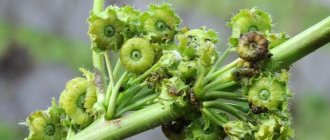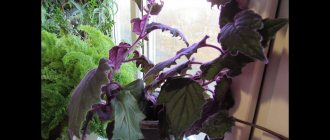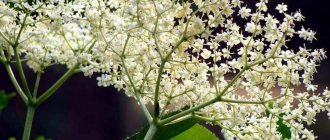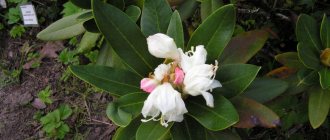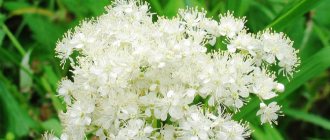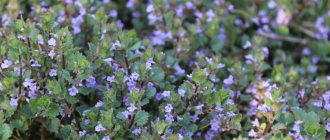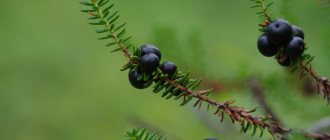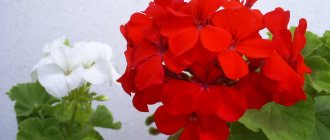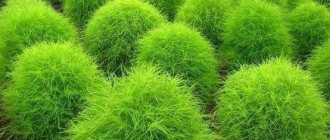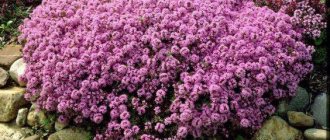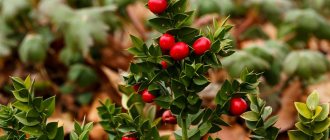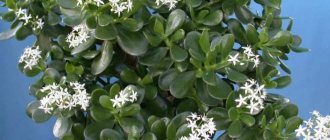Despite the fact that Echinops, or Echinops, as it is also called, is surprisingly similar to thistle, it belongs to the Astrov family. This is one of the most interesting perennials for specific places: dry and heavily sunlit.
Mordovnik is a honey plant that attracts bees and bumblebees throughout the summer. From afar, the spherical flowers look like thorns. The rare color and original shape make this plant a decoration for any flower garden. It is even mentioned in the Bible.
Botanical writing and characteristics
Mordovnik is a tall herbaceous plant that comes from the Asteraceae genus. The height of the shrub exceeds 2 meters, so mordovnik is grown mainly in gardens and parks. Most types of flowers are perennial, but annuals and, less commonly, biennials are also found in nature. A special feature of the shrub is its appearance, which looks unusual. The plant is popularly called shootout, eryngium, and tartar. In addition to its decorative qualities, Echinops has practical applications in folk medicine and use.
The flower has a fluffy long rhizome that helps keep the tall stems erect. The roots have little branching, but are very dense and thick, due to which the tartar receives a large amount of nutrients from the soil. The flower needs a lot of space for active growth.
The stems of Echinops are arranged singly. The shape of the stems is straight, very dense and fleshy. There are varieties with several stems. The surface of the shoot is covered with spines, so the stem appears even larger in volume. The cutting diameter of the stem can exceed 5 cm. The color of the plant shoot is from light green to light green, depending on the variety. In some places, small adventitious stems are visible on the stems, the number of which decreases as they reach the top.
On the entire surface of the stem there is carved, openwork foliage, giving the shrub an unusual appearance. The surface of the leaf is smooth, with jagged edges. Due to its shape, the foliage of the Echinops appears to be torn in several places at the same time. Most of the foliage is located near the root of the plant; only single leaves grow towards the top. The foliage color of the main species is dark green. The size of the leaves decreases towards the tip of the flower and ranges from 30 cm along the central vein to 10 cm, depending on the location of the leaf on the flower. The leaves are wide, large specimens exceed 15 cm in diameter. The top of the leaf is covered with a glossy layer, and the bottom of the leaf plate has a rough surface, which is necessary to prevent waterlogging.
Mordovnik blooms in late spring or early summer, so the flower is of interest to honey bees. The flowers are large balls of blue-blue or purple flowers. There are species with white inflorescences. 400 buds can bloom simultaneously on one inflorescence. During the flowering season, Echinops changes about 30 inflorescences. The diameter of the inflorescence balls exceeds 5 cm. Flowering continues for more than a month.
After flowering ends, fruits appear at the site of bud formation. Small achenes are capsules filled with seeds. The seeds are brown in color and do not exceed 5 mm in size.
Description of Echinops
The root system of the plant has a rod structure. The main and powerful branch of the root goes deep into the ground. Smaller ones branch off from it, reliably holding the shrub in the soil.
Stems grow directly from the root, their number varies, up to ten shoots. The shoots grow vertically, their height reaches up to two meters. The stems branch widely, starting from the middle and closer to the top. All of them are covered with short and stiff hairs that are brown or silver in color.
Leaves grow both directly from the root and from the shoots of Echinops. At the base of the bush they grow thicker and are larger in size, reaching twenty-five centimeters in length, and their width can be up to ten centimeters.
The leaves on the stems are much smaller and grow much less frequently. Moreover, the foliage growing from the root has short petioles, while those growing on the stem do not have them.
The structure of the leaf plate is dense, wavy and smooth on the front part of the leaf, while the back part has hard prickly pubescence. The foliage color is dark green, the shape is similar to a large feather cut in half.
Mordovnik blooms at the end of spring, and this period lasts an average of five weeks. The flowers are small, their shape resembles a pipe with a bell at the end, they cluster into small spherical inflorescences growing in the upper part of the shoots.
The inflorescence has a size of up to five centimeters in diameter, up to four hundred flowers can be concentrated there, and on one bush there can be up to thirty such inflorescences.
The flowers are white, blue or dark blue, so the plant is a very beautiful sight during the flowering period. The flowers emit a strong, pleasant aroma; their nectar contains a large amount of sugar. Therefore, the plant is often used as a honey plant.
The fruits are small, brown in color, placed inside a cylindrical fruit capsule. This box, only six millimeters long, contains large quantities of Echinops seeds.
Spreading
Mordovnik is distributed throughout almost the entire territory of Russia. You can find wild thickets of tartar grass throughout the European part. In addition, the plant is widely known in Siberia and the Caucasus Plain.
The plant prefers to grow in places with plenty of light. In their natural environment, tartar grows in the middle of meadows and near rivers. In addition, the unpretentiousness of the Echinops allows shoots to appear in wastelands and other dry areas. The decorative nature of the plant allows you to create a decorative appearance even with the formation of dead plant material.
Mordovnik: application
Mordovnik is not particularly used on the farm. It is also not considered a harmful weed. In the villages of the Orenburg region there is a belief that if you hang a bouquet of Echinops over the front door, then no evil spirits will enter the house.
The above-ground part of the plant is widely used as an organic fertilizer, because the grass has many microelements. Common violet Echinops is often used by florists to create winter bouquets. This plant is grown by amateur gardeners in gardens as an ornamental plant due to its attractive ball-shaped inflorescences.
Mordovnik seeds have found wide application in technology. From them, oil is obtained, which can be used to dilute solid oil and viscous liquids. It is also used to reduce friction of technical parts.
Types of Echinops
There are about 200 species of tartar. Only a few dozen varieties are grown in an artificial environment, which are the most unpretentious and frost-resistant.
Round-headed Echinops
The most common type of Echinops. It is a tall, almost leafless, shrub with thick branching stems and bright large spherical inflorescences. The height of the bushes does not exceed one and a half meters. A feature of the species is the branching of shoots. The stems begin to branch strongly only towards the top of the bush, due to which the plant is practically bare from below.
The leaves of the tartar are dark green, sessile. They are long and wide feathers, most of which grow at the base of the flower. The leaf blade is smooth, with jagged edges, the ends of which have thorns.
The stems of the variety are thick, reaching 7 cm in diameter. In this way, the plant calmly withstands windy weather and maintains an upright position. At the top of each stem at the end of spring, bright white balls - inflorescences - appear.
The inflorescences are spherical, spiny. The diameter of the buds reaches 8 cm. The ball-headed mordovnik is the largest representative of its genus in terms of the size of the inflorescences. The species blooms at the beginning of summer.
Common Russian Mordovnik
A special feature of the variety is its smaller size, unlike other representatives of the Echinops. The total height of the bush usually does not exceed half a meter. The plant has a dense dark green stem covered with thorns. In addition, a feature of the species is the presence of silver-colored fibers on the stem and below the leaves.
Long, spiny leaves are located over the entire surface of the foliage. The arrangement of foliage on the stem is alternate. The size of the leaf blade depends on its location on the stem - the higher the leaf is located, the smaller it is. So, the length of the leaves from below is about 20 cm, and towards the top the leaves do not exceed 5 cm along the central vein. The leaves are feathery in shape, with spines formed at the ends of the feathers.
Common Echinops blooms in mid to late summer, so the flowers are not of particular interest to beekeepers. Tartar blooms in small balls, up to 3 cm in diameter. In its natural environment, the plant blooms with purple-blue buds. In artificial conditions there are varieties with white or blue shades of inflorescences.
After flowering, the plant produces fruits with small brown seeds. In the natural environment, the seeds quickly germinate, forming thickets of tartar.
Echinops latifolia
Another representative of low-growing varieties of Echinops. The height of the bush together with the flowers does not exceed 70 cm. A special feature of the plant is the presence of silver-colored fibers on the stem, which densely cover the dark green surface of the stem. The stems begin to branch as they reach the top of the flower.
On the surface of the stem there are alternately feathery, serrated leaves of a dark green hue. The leaves are wide and long, at the base of the flower the leaf grows up to 10 cm wide and 25 cm long. The surface of the sheet has a glossy tint on top, and a fuzzy, silvery surface underneath.
The variety blooms at the end of spring. Inflorescences of bright blue or blue-violet color rise above the surface of the flower. Despite the spherical, prickly shape, the flowers are soft to the touch. The variety is often used in decorative arts.
Mordovnik - a fragrant and beautiful honey plant
Mordovnik is a perennial herbaceous plant from the Asteraceae family. It is distinguished by unusual spherical inflorescences. The plant is also known under the names "echinops", "tartar", "eryngium", "perestrel". Mordovnik is most widespread in Siberia, the European part of Russia, Western Europe and the Caucasus. Carved foliage and unusual flowers look spectacular in the garden. They attract honey insects and are also used in folk medicine. Learning to care for Echinaceae is not difficult. In gratitude, he will bestow lush vegetation.
Botanical characteristics
Mordovnik is a tall herbaceous plant. The genus is dominated by perennials, although one- and two-year crops are also found. The height of the erect stems reaches 0.5-2 m. The tap root of the Echinops plant goes deep into the soil. At the top the shoot branches. It is covered with short silvery or brown hairs.
Pinnately dissected spiny leaves are grouped mainly at the base of the shoot. The basal foliage has petioles, and the stem leaves sit tightly on the shoot. The dark green leaf blade grows 10-25 cm in length and 5-10 cm in width. The higher the leaves are from the ground, the smaller they become. The upper side of the sheet has a glossy wavy surface, and the lower side is covered with thick felt pile.
Flowering begins at the end of May and lasts more than a month. Small tubular flowers are collected in a spherical inflorescence at the end of the stem. Each inflorescence can contain 150-400 buds. Up to 30 inflorescences develop on one plant. The diameter of the head is 3-5 cm. The flower petals are colored blue, blue or white. Around each flower there is a barely noticeable bristly wrapper.
At the end of June, the fruits begin to ripen - miniature cylindrical achenes. They have a glandular shell and a crest. The length of the achene is about 6 mm.
Types of Echinops
The genus Mordovnik has 190 species, while less than a dozen of them are grown in the culture of our country.
Ball-headed Echinops. The plant is especially popular. An erect, almost bare stem 1.2-1.5 m long branches at the top. Each shoot is crowned with a large white-blue spherical inflorescence. Its diameter is 4-7 cm. The dark green leaf plate is dissected into small lobes that end in sharp spines. Flowering occurs in June-July.
Common mordovnik. The variety is more compact in size. The height of the shoots does not exceed 60 cm. The dark green stem and the back of the leaves are covered with glandular silvery fibers. The length of the next sessile foliage is 6-20 cm. In July-August, blue spherical inflorescences with a diameter of about 2 cm bloom. A white style with an ovary protrudes significantly from the center of each flower.
Echinops latifolia. The height of this perennial plant is 30-75 cm. The dense stem is covered with long silvery pile. Dark green leaves with a spiky serrated edge grow 20 cm in length and their width is 10 cm. Beautiful blue-violet inflorescences bloom in May.
Growing and planting
Echinops is propagated by seed. The collected seeds are dried and stored in a dry, warm place. They remain viable for 3 years. Planting is done immediately in open ground. It is best to do this in the fall, but spring sowing is also allowed. Spring shoots develop somewhat more slowly. Before autumn sowing, it is recommended to carry out cold stratification for a week. This procedure will prepare the seeds for the upcoming frosts.
In September-October, the seeds are mixed with sawdust and evenly distributed into grooves to a depth of 1.5-3 cm. The distance between the grooves should be 60 cm. Then the soil should be leveled with a rake. No additional shelter is needed. It’s good if in winter the entire field is covered with snow, then the shoots will begin to develop earlier, and friendly shoots will appear in early spring.
In the northern regions, seedlings can be pre-grown. This is advisable if you need to sow a small area. Seedlings begin to be grown in early March. Seeds are sown in containers with sandy-peaty soil and carefully moistened. Shoots appear in 7-10 days. To prevent the seedlings from freezing, they are planted in open ground only in mid-May.
Mordovnik prefers loose fertile soils with a neutral or slightly acidic reaction. It develops poorly on heavy clay soils. The plant also has a negative attitude towards the proximity of groundwater and reservoirs. In the first year, the grass builds up its root mass and forms a lush rosette of basal leaves. From the second year, a long stem begins to develop, which is covered with beautiful inflorescences. Every year the size of the bush becomes larger, and the flowering becomes more abundant.
Plant care
Caring for mordovnik is quite simple. It is most vulnerable only in the first year of life, when it may suffer from the dominance of weeds or severe frosts. In the future, the gardener will have to make more efforts to limit the spread of the plant throughout the garden.
Mordovnik prefers well-lit open areas. It is not afraid of direct sunlight, but in shaded areas the grass may die.
The plant does not suffer from intense heat and severe frosts. In winter, it can withstand temperatures down to -40°C without shelter. It is also not afraid of drafts and strong gusts of wind. Tall plants should be planted near a support or tied up. Under their own weight, the stems sometimes droop or even fall to the ground.
Mordovnik does not need watering. It continues to develop even in extreme heat and prolonged drought, when the soil dries to dust. It is recommended to fertilize several times a year. In spring, plantings are fertilized with leaf humus or rotted manure. During the flowering period, the bushes are watered with a solution of mineral fertilizer with a high nitrogen content (ammonium nitrate).
To prevent abundant self-seeding, Echinops inflorescences are cut off before the seeds ripen. In autumn it is necessary to cut the stems down to the ground. Only the roots overwinter, from which young shoots grow in early spring.
Echinops is rarely damaged by plant diseases. Only on waterlogged soils does it suffer from root rot and leaf spot. It is not possible to save the plantings; they have to be completely destroyed and the soil treated with fungicides. Parasites do not settle on the plant, so there is no need to worry about protecting it from pests.
Echinops honey plant
Mordovnik is a famous honey plant. Each inflorescence contains up to 20 mg of sugars. From 1 hectare of flowering Echinops, bees are able to collect up to 1000 kg of honey (global Echinops). Other species produce an average of 300-500 kg of honey. Every year the amount of nectar received increases. It can stand out in any weather.
Echinoid nectar is part of forb honey. It is distinguished by its light yellow or amber color and high transparency. After sugaring, honey becomes lighter, even whitish. It has a subtle spicy aroma and delicate taste.
The product has been proven to have pronounced medicinal properties. It is used to strengthen the immune system, combat hypotension and relieve nervous tension.
Caring for Echinops
Mordovnik is a honey plant that is of wide interest to beekeepers. In addition, the plant is used as a way to unusually decorate gardens and parks. In order to ensure long-term flowering, they provide high-quality care for the shrub throughout the entire growing period.
The easiest way to grow Echinops on your property is with seeds. Perennial representatives of Echinops are not picky about growing conditions. Therefore, you do not need to select a specific place to plant the plant. Special attention to Echinops is required only in the first year after planting, when the plant is weak and may suffer from a lack or excess of moisture. In addition, in the first year after planting, Tatar does not tolerate cold winter well. Since fragile and unformed roots can quickly die from frost, additional care is required.
Lighting
When planting Echinops, you should choose open spaces with plenty of direct sunlight. The plant feels great in the center of a flower bed located on the south side of the garden. The grass needs solar energy for active growth, so it must reach the flower most of the day. Planting in shaded areas can cause the death of the bush.
Temperature
Mordovnik is not afraid of sudden temperature changes. Mature shrubs feel great both in the hot summer heat and in cold forty-degree frosts. Adult plants are not afraid of drought. Attention should be paid only to young individuals in the first year after planting. Drafts and winds are not an obstacle to the normal growth of the flower. However, Echinops stems can break under their own weight. Therefore, adult specimens, when grown in garden conditions, must be tied up and support provided for the stems.
Watering
Adult Echinops plants do not require watering even in dry weather. However, the first year after planting, for normal development and growth of the grass, it is necessary to water the bush at least once a week.
In the dry season, when the earth begins to crack from the constant heat, Echinops feels great and continues to grow. However, flowering rarely occurs at such a time. Therefore, in decorative art, in order to achieve flowering of adult representatives, Echinops is watered 1-2 times a month to saturate the roots.
Fertilizer
In order for Echinops to retain its decorative qualities for a long time, the soil must contain a large amount of nutrients. Therefore, organic fertilizers are regularly added to the soil where the plant is kept. Organic fertilizers are applied to the bush twice a year - after the onset of warm weather and before the first frost.
A component for the normal growth of tartar are nitrogenous fertilizers, so the composition of organic matter should include a large amount of minerals and nitrogen. If you buy fertilizer in a store, ammonium nitrate or other nitrogen-containing fertilizers are perfect.
Trimming
In a decorative environment, regular pruning of Echinaceae shoots is necessary. In this way, flower growers prevent self-seeding and wild tartar. To do this, after the grass blooms, places with fruits that have formed, but have not yet had time to ripen, are cut off and removed.
In addition, after flowering, before the onset of frost, the above-ground part of the bush is completely removed. In this way, the mordovnik is prepared for winter. In addition, the resulting dead wood does not represent a decorative appearance. In spring, the roots will again produce green stems.
How much to plant
When growing honey plants, beekeepers save on everything. It is imperative to maintain the seeding rate. The seeding rate is somewhere between 12 and 14 kilograms per hectare, and some recommend 5, 4 and 6 kilograms per hectare,
but I think that somewhere around 12-14 kilograms is optimal per hectare.
Why, because the first year we sow, the second year it blooms, but that is, six kilograms of these plants that developed from these 6 kilograms of seeds and bloom, and the second part from the seeds will bloom, as it were, in the 3rd year, then the Echinops in the second year it flowers and is fertilized and begins to replenish itself with these seeds, but it will only bloom due to these seeds that have ripened in this field; this is already achieved in the fourth year. I have this field and how will the honey plant flourish, I think another 4 years, in total it turns out to be 8 years, but it’s better, of course, as soon as it starts to weaken, treat it either with a DT-shkoy or with bigs, going through bigs from time to time is not so harmful and you can do it at least every year . Bigi is borana and needle-read.
Growing and planting
The easiest way to grow Echinops is from seeds. The ripened fruits collected in the fall are stored during the winter in a warm and dry room. After the onset of constant heat, the seeds are mixed with sawdust and evenly distributed into pre-prepared grooves. The depth of the grooves should not exceed 2 cm. When planting, a distance of half a meter is maintained between plantings. Sowing can be carried out in the fall, but for seed germination, they provide reliable shelter for the crops throughout the entire period of frost. After sowing, the soil is evenly distributed using a rake. If winter is tolerated normally, seedlings appear in early spring, immediately after the snow melts.
Cultivation for decoration in the gardens of the North requires the germination of Echinops seedlings. To do this, seeds are sown in pots or containers in early spring. The soil should be regularly moistened with a spray bottle. For faster germination, cover the container with film and place it in a warm place.
With proper care, seeds germinate within a week. After emergence of seedlings, the cover is removed, and the plant itself is regularly watered. After the onset of constant heat and the formation of several permanent ones on the seedlings, the seedlings are transplanted into open ground.
Mordovnik is planted in May, in well-drained soil with plenty of sand and peat. The earth must contain a slightly acidic environment. Heavy soils have a bad effect on flower development. In addition, the plant is planted in soils located away from water sources.
The first year the Echinops grows flowering and foliage. therefore, flowering begins only in the second year. Every year after planting, the shrub becomes more magnificent and larger.
How is it grown?
Growing Echinops does not seem difficult. The plant itself is quite unpretentious and easy to care for. It can grow on any soil, but still has its own favorite soil composition. It grows well on land fertilized with black soil, or containing clay and fertilized with organic fertilizers. Fields after harvesting corn or potatoes are perfect for these purposes.
Apple tree Melba: description and characteristics, planting and care, photo
An important quality of Echinops is its good tolerance to drought. It is able to grow and bloom even with irregular and poor watering. However, it is not worth using this quality constantly and it is better to provide average but constant watering. Prefers direct rays of light.
The plant can be planted with both seeds and fruits. Seeds are sown in autumn, under the cover of phacelia. Phacelia is an annual plant that, when growing, forms a delicate green carpet that easily decomposes and provides the earth with nitrogen. The seeds are not placed densely, with an interval of 20 cm. You can sow the seeds either by hand or using a special sowing device. At this time, the plant will be able to produce strong sprouts and help get rid of weeds.
Important! The fruits are planted at the end of summer or in mid-autumn. They are spread over the ground and then covered.
For better growth, it is necessary to fertilize the sprouts with ammonium nitrate in early spring to provide additional nitrogen.
The globular mordovnik can be easily confused with its close relatives – tall and Russian. Their honey-productive function is many times worse. Therefore, for novice beekeepers, it is better to first consult before planting.
Wintering
Adult Echinops do not require preparation for optimal wintering. Shrubs easily tolerate winters and low temperatures without additional shelter. Preparation for the winter of Echinops consists only of pruning the dried stem formed after the formation and ripening of the fruit.
Young individuals of the tartar do not tolerate frosts well. Therefore, in the fall they create additional shelter for them. To do this, a layer of spruce branches or dry foliage is placed on top of the soil. In the spring, after the snow melts, the layer is removed.
What does Echinops look like?
Mordovnik is a plant with a height of 30 cm to 2 m. These are bushes of dense stems that are covered with prickly leaves of gray-green color. The stem of the stem is sometimes pubescent and fleshy.
The flowers of the plant are spherical capitate inflorescences with a diameter of 3–5 cm. They have a white corolla and dark blue anthers. The leaves are light blue. Because of this, Echinops received the popular name “white tartar”, “Engineaceous”.
The fruits of the plant are achenes, which have a cup-shaped pappus that is cylindrical in shape. The length of the achenes is about 6 mm. Mordovnik seeds have a large amount of fatty oil. It has no smell, only a subtle pleasant aroma is felt. Butter is one of the best vegetable fats, as it does not harden even at 20 degrees below zero.
Reproduction
If necessary, you can propagate Echinops in two ways - by seed propagation or by dividing the bush. Adults that bloom or bear fruit for 2 years or more are subject to reproduction.
Dividing the bush
Reproduction by dividing the bush is carried out when it is necessary to obtain one or two individuals of the tartar. Reproduction is carried out in the fall, when the bush has bloomed and the fruits have ripened. The bush is dug out of the soil and freed from excess soil. After this, the rhizome is divided into two or more equal parts. It is important to understand that small parts do not take root well, so when dividing, take into account the size of the remaining bush.
The separated parts of the bush are immediately picked up and planted in a permanent habitat. Immediately after planting, the Echinops is watered abundantly with water and provided with regular sunlight.
Propagation by seeds
Seeds for planting are collected after the fruits ripen. Sowing can be done both in autumn and spring. Moreover, in both cases, flowering will occur only in the second year after planting. Properly and timely collected seeds are stored and retain the ability to reproduce for two years after collection.
Sowing is carried out in well-ventilated and moisture-absorbing soil. Sowing is carried out in moist soil. After which the soil is leveled and left until germination. After planting in a warm climate, the seeds sprout within 7-10 days. For the winter, the seedlings are covered with a layer of dry leaves or spruce branches.
In the spring, with the advent of constant warmth, the layer of shelter is removed, and the plants quickly germinate and gain growth and abundance of foliage.
Mordovnik
Although Echinaceae are thorny, their original hedgehog inflorescences undoubtedly deserve a place in sunny summer flower beds. Thanks to their chiseled shape and stately bearing, these “balls on sticks” play a drum roll in mixborders and meadow flower beds: Echinops always attracts attention and in any combination.
Echinops Veitch's Blue
In spring, the rough but attractive carved bluish-green prickly leaves with a white felt lining and pointed tips are collected in dense rosettes. And already at the beginning of summer the picture is completely different: vertical leafy peduncles are topped with steel-colored “spiny” balls that look like hedgehogs.
Most Echinaceae species bear “balls” of buds several weeks before flowering. Each “thorn” is a bud that will open into a small greyish-blue, violet-blue or white flower with a metallic sheen.
Echinops Taplow Blue
“Balls” collected from many such flower tubes bloom from top to bottom. Flowering lasts about a month and a half, and during this time the honey-bearing Echinops basks in the attention of wild bees, bumblebees and butterflies, and at dusk - even moths.
When the seeds ripen, the “balls” turn brown. They are beautiful even when withered, but they do not last long under the onslaught of rain and birds, which enjoy the seeds of the mordovnik.
Mordovnik feels best in a sunny place, but can also withstand light shade. It grows on any soil, it is only important that the water does not stagnate: it easily rots in damp conditions. Lack of nutrition keeps the bush in shape, while in rich soils the stems are taller and fall apart and may require staking. In general, Mordovnik is delightfully undemanding.
Echinops adds two rare decorations in the garden to any flower garden: topaz blue or sapphire blue and jewel-like spheres of inflorescences. At the same time, the elegant and rather austere appearance of Echinops fits perfectly into modern “new wave” gardens with meadow flower beds,
and into mixborders of traditional cottage gardens, where it will clearly stand out among the man-made chaos of “disheveled” flower beds with dahlias, hollyhocks, delphiniums, bluebells, phlox, daylilies, and sages.
Tall species are worthy of the title of “architectural” plants. They can even be imagined in combination with the most luxuriously flowering shrubs: clematis, paniculata hydrangea, spray roses, and this will be an equal partnership.
Mordovnik perfectly contrasts in color and shape with pastel yellow and rich golden flowers: yarrow, elecampane, mullein, rudbeckia, helenium.
Its blue “balls” will be a wonderful addition to color schemes involving cool violet, lilac, lavender, magenta, red, and white.
Mordovnik will become an effective participant in thematic color gardens: blue or silver - with gray rose, willows and oleaster, tartar, eryngium, cornflowers, fescue and other plants with grayish-gray foliage. Of course, due to its increased thorniness, you should not plant Echinops in areas where children play.
Both fresh and dried inflorescences are used in bouquets. The first ones are cut off as soon as the flowers on the top of the “ball” open. They will last in the bouquet for 6-10 days.
And for drying, “balls” are prepared when a third of the flowers have already opened, but the top ones have not yet faded or dried out. If you hang them in a warm, dry place with the “balls” down and do not remove the leaves, they will not lose color when dried.
You need to handle them carefully - dried flowers are quite fragile.
Species and varieties of Echinops can be propagated by carefully separating the root shoots
from the main outlet in the spring (it should be at least three years old).
Or root cuttings
, which are cut in late autumn before frost or early spring.
Species plants can also be propagated by sowing seeds
for seedlings in February or in the ground from spring to autumn. There is no need to sprinkle them, just press them into the ground. Seeds germinate at a temperature of +18...+22°C for 2-3 weeks. Seedlings can be planted 3-4 weeks after sowing.
They will bloom in the second year.
Problems and solutions
Aphid
may covet mordovnik if he doesn’t find anything more tasty. In case of severe damage, any insecticides recommended against this pest will help.
Root collar rot
can affect Echinaceae on waterlogged soils. Therefore, good drainage is vital. If the plants are mulched and begin to show signs of rot (weak development, yellowing of leaves), then it is worth removing the mulch from the bush 15-20 cm to allow the soil to dry.
During the summer, the lower leaves of the Echinops dry out and fall off.
, – there is nothing unusual in this. In the foreground of a flower garden, the plant may not look very neat. It is better to place low (30-60 cm) perennials in front of it: geraniums, low varieties of pike, sporobol, sedum, etc. They will cover the fading lower part of the Echinops.
Seasonal care
Spring.
Mordovnik has a taproot system, so it does not like transplanting - it is better to plant it immediately in a permanent place. In groups, 5-9 seedlings per square meter are planted. New plantings are watered if there is no rain.
After division or transplantation, taproot plants often take a long time to recover and may even die. If absolutely necessary, these procedures can be carried out until the end of May.
At the same time, you need to try to dig as deep as possible in order to preserve the largest possible root ball.
Summer.
To avoid self-seeding and partly stimulate re-flowering, you can trim off the faded “balls” by cutting off the peduncle just above the side shoot below, or cut off the stem at the base if all the “balls” on it have faded.
Rooted Echinops bushes are very drought-resistant. However, if there is no rain, plants in the first year of planting should be watered once every few days.
And during a long drought, old Echinops bushes will look better if you give them rare but abundant watering.
Autumn.
If the faded “balls” were cut off in the summer, then the Echinops can delight you with repeated flowering in the fall. And if not, they will self-sow abundantly, and unwanted seedlings will have to be weeded out next spring.
There are two options to avoid unnecessary work: you can cut off all the stems immediately after flowering or plant cultivars that do not self-sow (Taplow Blue, Veitch's Blue). Once every two years, you can throw a shovel of compost under the bush.
Thorny leaves and fruits do not give the most pleasant sensation when caring for a flower garden. Therefore, when trimming Echinops, you should wear thick gloves.
Popular types and varieties
There are approximately 120 known species of Echinops, but gardeners are particularly attracted to only three of them.
Common Mordovnik
(Echinops ritro) reaches 70-100 cm in height and is distinguished by stems with white pubescence.
This perennial blooms in early July, the balls reach 3-5 cm in diameter. the Veitch’s Blue
variety are darker, the stems are up to 90 cm tall, and the cultivar blooms earlier than others.
Mordovnik banatii
(Echinops bannaticus) is often confused with its previous brother. But it is distinguished by its more southern origin, its bush is wider and taller (up to 1.5 m), and it has fewer thorns.
Variety Blue Globe (Blue Ball)
- a purely marketing ploy, it is no different from the appearance.
Albus
has white flowers.
Taplow Blue
reaches 90-120 cm in height, and its blue “balls” with a steel tint are up to 7 cm in diameter.
Ball-headed Echinops
(Echninops sphaerocephalus) – biennial or perennial, from 70 cm to 2 m tall. Its branched stems are covered with reddish-brown pubescence. Blooms in July–August, “balls” up to 5 cm in diameter.
Arctic Glow
It is distinguished by pure white flowers and retains varietal characteristics when sowing seeds. It is about 1 m in height.
Blog announcements in the Telegram messenger
My pages on Facebook and VKontakte, old blog on LiveJournal and albums on Yandex photos.
Source: https://zen.yandex.ru/media/skalyakin/mordovnik-5a9512d000b3dd48c7edb6d1
Medicinal properties and indications for use
Mordovnik, due to its chemical composition, was included in traditional medicine preparations. Echinopsin was widely used in medicine as a medicine against disorders of the central nervous system. However, the toxicity and poisonous properties of the plant caused doctors to refuse to use the honey plant in treatment. However, traditional medicine to this day contains recipes with mordovnik, which are used to treat diseases.
The use of tartar in folk medicine is widely used as drugs to improve general health and enhance human immunity. Preparations containing tartar help alleviate a person’s condition after operations on internal organs. In addition, the effectiveness of medicinal raw materials has been proven when used in the treatment of heart pathologies - heart attacks, strokes.
To date, it has been proven that Echinops has a positive effect in the treatment of radiation sickness and other skin pathologies.
The main medicinal properties of Echinops are:
- choleretic;
- diuretic;
- healing wounds;
- relieving inflammation;
- stopping bleeding.
In addition to the above, Echinops seeds help strengthen mental activity and improve brain function.
Chemical composition
The widespread use of tartar in folk medicine is determined by its chemical composition. So, mordovnik contains substances such as:
- echinopsin;
- essential oils;
- flavonoids;
- steroids;
- rubber and resins;
- ascorbic acid;
- mineral compounds;
- saponins.
The seeds of the plant contain a large amount of tannins, which are necessary for the human body to remove waste and toxins. The main part of the beneficial substances is contained in the fruits of Echinops. The medicinal value of tartar comes from the leaves and inflorescences of the plant, which are also used as medicinal raw materials.
Echinoid tincture, infusion and decoctions are prepared as medicines. The main indications for the use of drugs are:
- migraine;
- muscle tone disorders;
- inflammation of internal organs;
- disruption of the gastrointestinal tract;
- dysfunction of the genital organs in men;
- increased body temperature;
- hearing loss and hearing impairment associated with damage to the nervous system;
- lowering blood cholesterol levels;
- epileptic seizures;
- low blood pressure;
- bleeding;
- inflammatory process;
- psoriasis treatment;
- multiple sclerosis.
It is important to understand that independent use of tartar-based products can be dangerous, since the main components of the plant are poisonous. Improper preparation of a decoction or infusion can cause poisoning.
Echinopsin, contained in large quantities in the flower, is the main component that is of interest as a medicinal substance. Based on it, drugs are made to treat affected areas of the nervous system. In addition, indications for the use of echinopsin are disorders of the spinal cord, including atrophy, hypotonicity and neuromuscular paralysis and cuts. The plant has been proven to have a positive effect on the treatment of optic nerve atrophy.
Useful properties of mordovnik
The presence of the alkaloid echinopsin, which gave rise to one of its names, was found in all parts of the plant. In its action it is similar to strychnine, which in its pure form is toxic. For a long time, drugs containing it were used in official medicine, but in 1981 they were discontinued due to high toxicity. The action of these drugs was aimed at treating the central nervous system and peripheral nervous system. In addition to this substance, flavonoids, vitamin C, saponins, essential oil and other active substances and mineral elements were found in Echinops.
How to procure raw materials?
The flowers and leaves of Echinops are collected during the flowering period in dry, clear weather. By the end of the summer season, seeds are collected for medicinal and planting purposes, and in the first half of autumn it is time to harvest the roots. Drying and storage of raw materials is carried out using traditional methods. Dried roots can be stored without loss of beneficial properties for up to 2 years, seeds remain viable for 3 years, all other parts of the plant should be used within a year.
Why and how to use mordovnik?
Based on the collected raw materials, water infusions, decoctions, oils are prepared and alcohol tinctures are made. They are used to:
- relieve migraine;
- stop an epileptic seizure;
- raise low blood pressure;
- stop the bleeding;
- stop the bacterial process;
- help patients with psoriasis;
- stop the development of multiple sclerosis.
It is important to remember that mordovnik-based products are toxic! Therefore, their use must be competent and careful. All drugs have contraindications; they should not be taken by people with asthmatic and allergic symptoms, as well as by children, pregnant and lactating women.
Mordovnik stands well when cut without water as a dried flower and is used for making floral arrangements.
Traditional medicine recipes
In folk medicine, decoctions and infusions based on Mordovnik are used. Medicinal raw materials are prepared according to various recipes, based on the clinical situation and diagnosis of the patient. To prepare mixtures, dried Echinops fruit is used, which is harvested in early autumn, after the seed pods have ripened. The shelf life of prepared seeds is 2 years.
General strengthening infusion
To prepare a tonic and restorative infusion, pour 3 teaspoons of Echinops seeds into a glass of clean hot water. After this, the glass is covered with a lid and left in a cool, dark place for half a day. Before drinking, filter the glass of infusion through several layers of gauze so that the seeds remain on the fabric. Take 50 ml infusion 4 times a day.
Treatment of impotence
To treat impotence, an aqueous infusion of Echinops is prepared, the composition of which is almost identical to the previous one. 4 teaspoons of plant seeds are poured into one and a half cups of boiling water and the mixture is allowed to brew for 12 hours. After that, drink a high-quality strained drink of a quarter glass 3 times a day.
It is important to strain the infusion thoroughly, since seeds that enter the body can have a toxic effect and lead to poisoning.
Treatment of psoriasis
An alcoholic tincture of tartar seeds is used as a medicinal drug to relieve psoriasis. The recipe is prepared in the following way: 2 tablespoons of the plant are poured with half a liter of vodka or alcohol. Then the resulting mixture is shaken well and stored in a cool, dark place for two weeks, shaking the composition periodically. The resulting tincture is used externally, lubricating damaged areas of the body 2-3 times a day. It is also possible to use compresses that last no more than 2 hours. The first positive results appear after just half a month of psoriasis treatment, and a qualitative improvement is observed after 3 months of regular rubbing with the tincture.
Treatment of blood pressure and autonomic disorders
To make the raw material, the seeds are passed through a blender to obtain a sandy mixture. Three teaspoons of the resulting mixture are poured into 200 ml of boiling water and left covered for 3 hours. After this, the infusion is filtered through thick cloth or gauze. Take a third of a glass orally 4 times a day. The course of treatment does not exceed 10 days.
Treatment of dystrophy
To treat dystrophic disorders, half a glass of alcohol is mixed with a teaspoon of plant seeds. The resulting mixture is poured into a closed container and infused for half a month. Take 10 drops orally before meals. A positive result appears after 7-10 days of use, the course of treatment is 30 days. After a month's use, you should take the same break and repeat the course.
Treatment of disorders of the central nervous system
A decoction of mordovnik is made. To do this, pour a teaspoon of tartar seeds with a glass of boiling water and cook over low heat for a quarter of an hour. The resulting broth is cooled and allowed to brew for two hours. The prepared mixture is taken orally in a tablespoon 4 times a day.
Also, for pathologies of the central nervous system, an infusion of mordovnik is used, which is made from 3 small spoons of the plant and a glass of boiling water. The resulting mixture is infused in a dark room for half a day, filtered, and then taken before meals, a quarter glass 3 times a day.
For urinary incontinence
Crushed tartar seeds are poured into a glass of boiling water in a dosage of 3 teaspoons. Cover the container with a tight lid and leave in a dark place for 2-3 hours. After which the resulting infusion is filtered and taken orally 1/3 cup. A positive result is noticeable after 14 days of use.
Treatment of radiculitis
Treatment of radiculitis requires the preparation of an alcohol tincture of Echinops. Tartar seeds and pure medical alcohol are used as medicinal raw materials. To prepare an alcohol tincture, pour a small spoon of seeds with half a glass of alcohol and store in a dark room for 4 weeks. Shake the tincture periodically. After preparation, the mixture is filtered well. The medicine is used to rub sore spots 10 times a day.
Treatment of chronic otitis media
To treat hearing diseases, prepare the following mixture of Echinops: 2 teaspoons of crushed seeds are poured with 10 teaspoons of sunflower oil. The resulting mixture is boiled in a water bath for 2 hours, then cooled and filtered. The resulting infusion is dripped into the ears, three drops in each ear 3 times a day. At night, the resulting mixture is left in the ear in the form of a turunda. Used within a month.
For ear diseases caused by damage to the nervous system, prepare a mixture obtained from the following herbs - mix equal parts of oregano herb, Echinops seeds, Leuzea, cap cap and rose hips. A tablespoon of the resulting mixture is poured with one and a half glasses of cold water and left to infuse for 3 hours. Then the mixture is boiled for 5 minutes. The resulting broth is infused for an hour and filtered until a homogeneous mass is obtained. Drink a quarter glass three times a day for a month
Treatment of neuritis of the facial nerve
To prepare a mixture for lotions, mix equal parts of lemon balm, peppermint and oregano, and add half of the Echinops seeds. the resulting mixture is poured with a glass of boiling water and left for an hour. Lotions are applied to the damaged area 2 times a day. To do this, the mixture is rubbed into the skin, then covered with a bandage or cotton wool for half an hour. The course of treatment is a week.
Methods of preparation and use
Alcohol and aqueous preparations are made from the medicinal Echinops. In both cases, the plant imparts beneficial properties well to the liquid base.
We recommend reading: Real tinder fungus: medicinal properties and uses, reviews
Mordovnik tincture
Traditional medicine mainly uses mordovnik in the form of a medicinal tincture. In strong alcohol, the valuable substances in the plant are best distributed. The drug is prepared as follows:
- Unpeeled plant seeds are poured halfway into a small glass jar;
- fill the raw material with vodka up to the neck;
- when closed, put away for 40-60 days in a dark, warm place;
- After the expiration date, filter.
You need to take the tincture three times a day on an empty stomach, 10-30 drops. For convenience, the product is pre-diluted in a spoonful of water.
You can use Echinops tincture without interruption for up to a month.
Decoction
A decoction of the plant has good medicinal properties. It is prepared like this:
- 5 g of dry seeds are poured into 300 ml of water;
- heat to a boil and simmer for another 15 minutes over low heat;
- cool and filter.
The product has a good effect on circulatory disorders, reproductive problems in men and poor digestion. It is usually taken 50 ml three times a day.
Mordovnik decoction can be used to treat inflammation of the skin
When is it prohibited to take mordovnik?
Echinopsis should be taken very carefully as a medicinal raw material. Uncontrolled use of drugs can cause symptoms of intoxication, as well as convulsions, nervous disorders and other motor paralysis.
Symptoms of Echinopsis poisoning include nausea, vomiting, dizziness and a feeling of weakness in the body. The person begins to experience headache and muscle pain. If the following clinical situation occurs, you should immediately seek qualified medical care. Before the doctor arrives, drink a liter of a weak solution of potassium permanganate.
Taking medicines based on Echinops is prohibited in the following cases:
- during pregnancy or breastfeeding;
- people with high blood pressure or suffering from hypertension;
- for pathologies of the heart and blood vessels;
- in the presence of bronchial asthma;
- for infectious and non-infectious liver lesions - cirrhosis, hepatitis;
- with kidney pathology;
- if the thyroid gland is not functioning properly;
- with uncontrollable seizures.
In addition, it is strictly prohibited to use Echinops as a medicine in children. If there are no restrictions, before using medications with tartar, consult a doctor about the required dosage and course of administration. You should not take medications with Echinops and if you have an unclear allergic history.
Mordovnik: pests and diseases
Reviews about Echinops indicate that it is very resistant to various diseases and pests. The main problem in growing this plant can be the development of fungal diseases. It often occurs when watering is incorrect (too frequent) or during rainy and sunny weather. Diseases such as powdery mildew and gray rot manifest themselves as a specific coating on the leaves of the plant. The disease affects the root system of the crop, after which it simply dies.
If signs of the disease appear, it is necessary to remove the affected plant from the flowerbed and burn it. The soil should be treated with fungicide solutions to destroy fungal residues.
Insects and parasites do not harm the Echinops, so there is no need to make efforts to combat them.
Collection and preparation
Harvesting of Echinaceae is carried out in places with sufficient growth of the Echinaceae habitat. In Russia, Echinops can be collected only in the Caucasus, but even there its range has begun to decrease. The harvest time falls in the summer, when the first flowers and ripened fruits of the plant appear.
Mordovnik flowers are collected as medicinal raw materials, which are then dried in a well-ventilated area. After drying, the plants, flowers and seeds are cleaned of grass residues and then placed in paper bags. Plants should be stored in a warm, dry place. The shelf life does not exceed 2 years.
How to collect seeds for planting
Mordovnik is easiest to sow by seeds.
You can collect them yourself or buy them ready-made from gardeners. The seeds are in dry inflorescences that scatter when separated from the stem, so immediately think about where you will collect them. Mordovnik seeds are collected from mid-August to the end of September. If you have collected few seeds, sow the area with the seeds that are available. Mordovnik bears fruit well, so in the first year you will be able to collect seeds for sowing on the rest of the plot.
Echinops can be sown in spring or autumn, but in such a way that the seeds do not germinate before winter.
Mordovnik as a honey plant
Mordovnik flowers are a good honey plant. Since each flower contains up to 20 mg of sugars, bees use nectar to make honey. Plantations of 1 hectare of Echinops allow bees to collect up to a ton of honey per season. The main honey-producing function is performed by the globular mordovnik, since it contains most of the sugar. The remaining types of the plant contain about a third of the sugar compared to the ball-headed tartar.
Nectar obtained from Echinops has a light yellow tint. Honey obtained from the tartar plant is transparent and pure, with a delicate taste. After sugaring the honey, the color becomes even lighter, almost white. Beekeeping products obtained with the addition of tartar have a number of medicinal properties. This allows you to use honey from forbs, with the addition of Echinops, to treat diseases.
Common Mordovnik
The common mordovnik is a herbaceous perennial plant that is distinguished by a taproot and a tall, erect stem. The leaves are oblong and alternate, can reach a length of up to 25 cm, and have serrated edges. The involucres, stems and leaves of flower baskets are glandularly pubescent. The diameter should not exceed five centimeters. The achene with involucres and a cup-shaped pappus is the fruit of the common Echinacea. It begins to bloom in summer, the fruits are ready for autumn. The common mordovnik is one of the best honey plants, which can reach a height of three meters, has productive nectar, and grows over the years.
Mordovnik is a fairly common herbaceous plant, most species are perennial. In the wild, it grows in meadows, forest edges and along rivers throughout almost all of Eurasia and Africa.
There are many popular names for this plant: steep Adam's head, eryngium, hedgehog sow thistle, blue ball, shootout, Mordvinnik, hedgehog, tartar, etc. However, keep in mind that many of these names are not used at all now, and some (in particular the last two ) are generally assigned by modern taxonomy to completely different plants.
Description of the common chinstrap
The flowers attract bees with their aroma; the common Echinops is not afraid of the weather. To grow a plant, you need to collect plant seeds, dry them thoroughly and store them in a special bag until the beginning of spring. It is best to plant them in April, when the temperature is already above zero, the depth should be up to three centimeters. The plant blooms only in the second year. If all conditions suit it, it blooms for up to 40 days.
The flowers, which are tubular inflorescences, must be picked off late in the fall and must be dried in the shade, in a windless place.
Common Echinops is a unique plant that is most often used for atrophies in the optic nerve and muscles, because it contains a lot of echinopsin. Traditional healers believe that this is one of the best remedies for weakness, dizziness and severe headaches. After the patient undergoes a full course of treatment, he forgets what fatigue and low performance are like.
Using Echinops in Landscape Design
The spherical spines and unusual appearance of the tartar plant determine the widespread use of the plant to decorate gardens and park areas. As a decoration, Echinops is used as a background for shorter flowers. To dilute the composition of the flower bed, common chinstrap will be used. The plant is predominantly small in size, so it does not harm other bushes and does not require special care. The broadleaf representative is also suitable for decorating gardens and parks with mordovniks.
Perennial shrubs combine with any tones and delight with their abundance of flowers for many years. Mordovnik looks impressive against the backdrop of rocky alpine hills, along fences. In addition, flower beds with an abundance of delicate flowers can be easily diluted by adding cool shades of blue tartar to the flower beds.
When planting Echinops in gardens, the size of the shrub is taken into account. It is important to understand that plant stems often collapse under their own weight, so a support for the future bush, which is part of the landscape design, is prepared in advance. Dead wood from tartar grass, which is combined with green buds of other small flowers, also provides a decorative appearance.
In landscape design, it is recommended to plant Echinops with asters, dahlias, wildflower, and phlox. The plant also gets along with marigolds, Chinese rose and primrose.
Features of cultivation
The plant loves the sun and dry, loose soil. Mordovnik can be placed without fear in areas exposed to the winds and scorching sun. It will not grow in valleys where the soil is oversaturated with water and in areas with acidic soil.
The culture does not make any special demands on the composition of the soil, other than the fact that it must be well drained and have a neutral reaction. Responds positively to the addition of lime, dolomite flour, and wood ash to the soil. On sandy, meager lands, humus must be added to increase fertility.
Planting by seeds
Mordovnik seeds can be collected on your own or purchased. Sowing is carried out in open ground in the fall from mid-September to the end of October. Spring sowing is very rarely used, because the crop grows more slowly.
Algorithm of actions:
- The seeds are mixed with sawdust.
- Make depressions (2.5 centimeters) in the form of furrows.
- Scatter the prepared mixture.
- Cover with soil.
- The distance between rows is at least 65 centimeters.
Advice! Before planting, it is recommended to keep Mordovnik seeds in a refrigerator; stratification will help the planting material adapt to low winter temperatures.
In temperate climates, the Mordovnik honey plant is planted in a small area using the seedling method. The activity of planting seeds is carried out in early March in containers with peat. After two weeks, the culture will produce young shoots. They are planted on the site in early May.
Reproduction
In the 1st year, the culture is created in the form of rosettes of leaves. In the 2nd year, flower stalks are formed. For normal flower development, weed the root space and row spacing. Starting from the 3rd year of life, cut off the plant’s tough old stems for rejuvenation, leaving up to 10 centimeters.
Once every five years, Echinops is propagated by dividing the bush. Separation Standards:
- moisten the soil so you can easily dig up the bush;
- Carefully dig up the rhizome and shake off the earth clod;
- divide the root system into a couple of parts, the number of which directly depends on the size of the extended shoots. Do not take into account small branches when dividing, since they are not viable;
- dig holes twice the size of the roots;
- add superphosphate fertilizer according to instructions;
- place the bushes in the holes, cover with soil;
- pour 3–5 liters of water under the bush.
Propagate in the fall so that the flower can adapt over the winter. Mordovnik is resistant to diseases if you do not over-moisten the soil. The flower is propagated for use in landscape design and as a peduncle.
Subtleties of care
Mordovnik requires care and attention only at a young age. Risks include invasive weeds and cold winters. Adult specimens grow independently, without the intervention of their owners. If the active growth of a crop is not kept in time, it will very quickly fill neighboring areas.
Seedlings are successfully formed in open areas, where the sun's rays slightly warm the foliage. Shadow has a detrimental effect on grass and disrupts the productivity of vegetative processes.
The perennial is not afraid of severe drought and can withstand cold temperatures down to -40°C. To protect tall stems from gusts of wind, they are tied to a support. Without support, heavy shoots droop, fall to the side or break.
Mordovnik does without watering. The roots are immune to heat even when the soil is completely dry. Fertilizers are applied a couple of times a year. At the beginning of spring, organic fertilizers are added to the bushes: manure or rotted leaves. At the flowering stage, shoots are enriched with nitrogen, for example, ammonium nitrate.
To prevent self-seeding, wilted inflorescences can be cut off. At the end of the season, the stems are pruned. Another spring, the overwintered roots again send out green shoots.
No predisposition to diseases has been found in Echinops. Except for conditions when there is excess moisture in the soil. In this case, the bushes will suffer from spotting and root rot. Infected plantings have almost no chance of salvation. Sick plants will have to be cut out and the flower bed treated with fungicidal substances.
